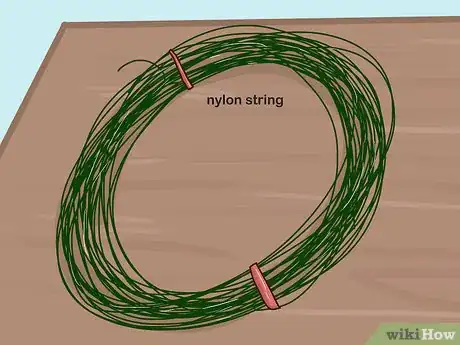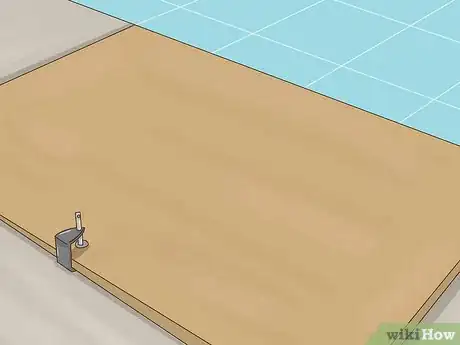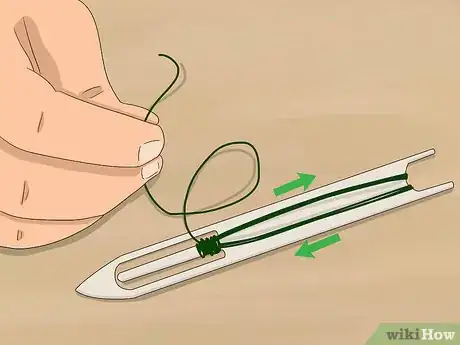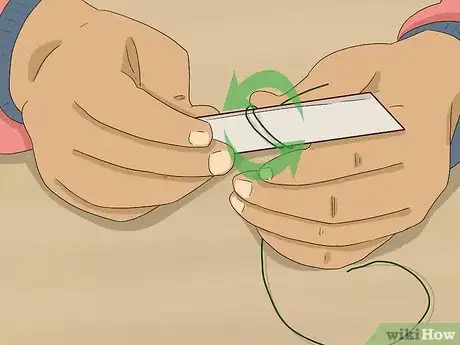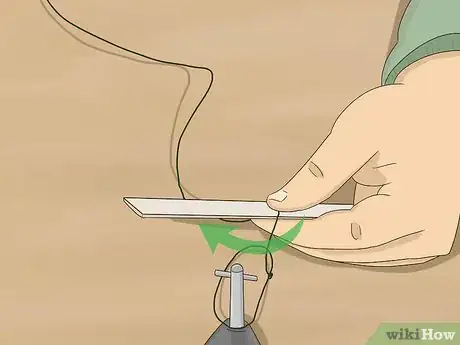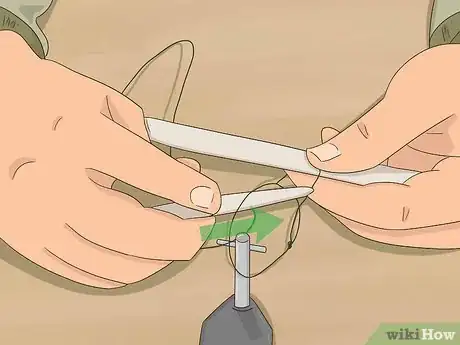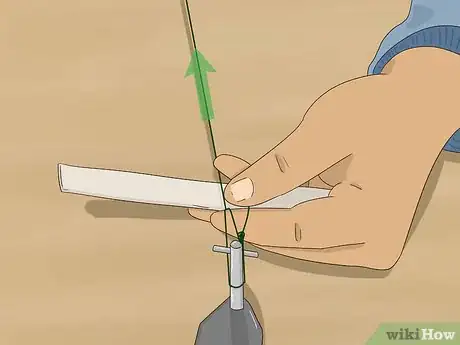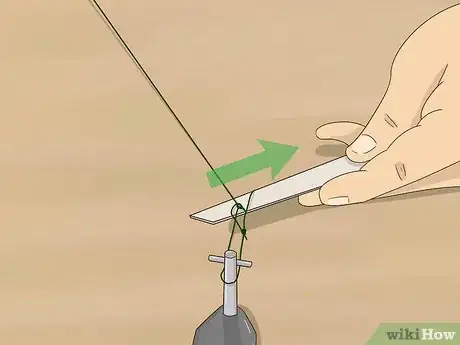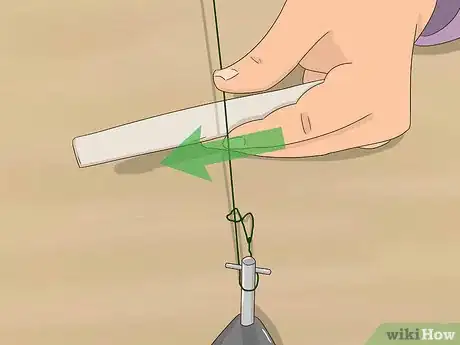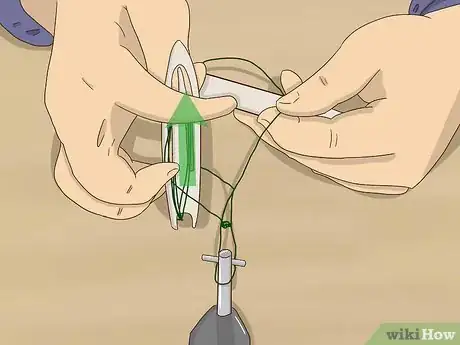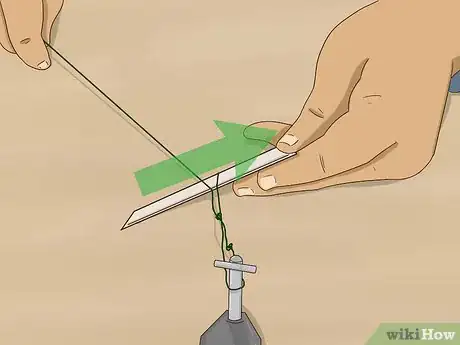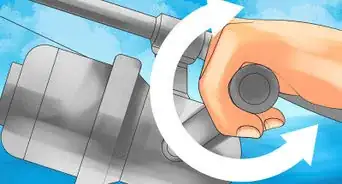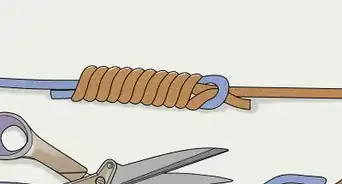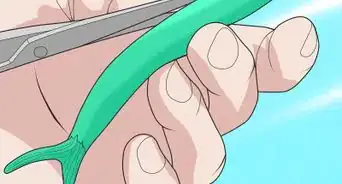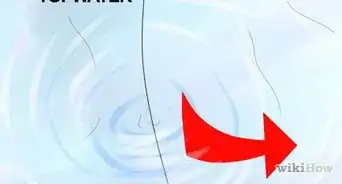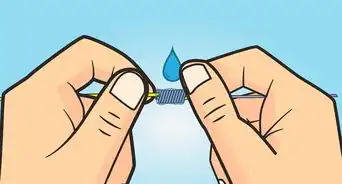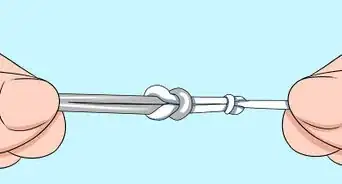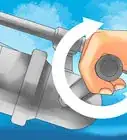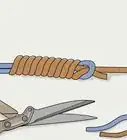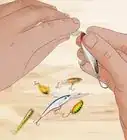X
This article was co-authored by wikiHow Staff. Our trained team of editors and researchers validate articles for accuracy and comprehensiveness. wikiHow's Content Management Team carefully monitors the work from our editorial staff to ensure that each article is backed by trusted research and meets our high quality standards.
This article has been viewed 434,750 times.
Learn more...
Mass-produced fishing nets can be expensive to replace and a pain to store or travel with. Fortunately net-making is a well-honed craft that gets easier with practice. All you’ll need is some space, some string and few tools to get started.
Steps
Part 1
Part 1 of 3:
Setting Up
-
1Choose your string. In theory your fishing net can be made of any string or twine. Think about what species you're trying to catch, and how it's size might affect the strength of the string used.
- It’s recommended that you use a bonded nylon string for strength. Of all contemporary twine it is the most durable and reliable.
- If you don’t have any nylon on hand or are unable to get any, consider practicing with whatever string you might have around.[1]
-
2Have your shuttle and gauge. The two essential tools for the net making process will be your shuttle (or netting needle) and gauge (or sizing card). Both shuttle and gauge can be found at your local craft or sporting goods store.
- The width of your gauge will determine the size of your finished net’s mesh. The diagonal of each mesh square will be equal to the width of your gauge.
- The shuttle is the needle with which you will weave the net, and needs to be smaller in width than your gauge so as to pass through the holes made for the mesh.
Advertisement -
3Set up your net-making area. Ideally this will be a table large enough to fit your completed net, laying flat. Though it’s not necessary, it’ll come in handy when trying to rest the net in between steps.
- What you do need is a nail (or a clamp with the center screw facing upwards) in the edge of table on the far side away from you. This rod will serve as the starting point for your net.[2]
Advertisement
Part 2
Part 2 of 3:
Beginning the Net
-
1Load your shuttle. To begin, you'll need to wrap your twine around the shuttle you'll use for your net. If you run out of twine before the shuttle is full, tie the end to another spool of twine. Cut the tags that remain on the knot and continue loading.
- Lay your shuttle flat in your hand and lay the end of the twine flat along the top, facing you.
- Take the twine and loop it around the center peg of the shuttle so it comes back towards you.
- Lay the string down on the same side parallel to the end strand, and run it down the shuttle and flip it over and run it up the other side.
- Loop this piece around the center peg and back down facing you, and repeat the process until you’re out of twine or the shuttle becomes too full to handle.[3]
-
2Make a loop with an overhand knot. The loop you make in this step needs to be close to the width of your gauge so that your shuttle may pass through it. Don't worry too much about the precision in size; so long as the shuttle can pass through, it's fine. This loop will hang extraneous at the edge of your net when completed.
- The overhand knot is the one most everybody is familiar with: you make a loop and pass the end of the line through the loop, pulling both ends to tighten.
- Take the loop that has formed from the knot and put it around the peg you’re using.
-
3Place your gauge. As mentioned above, your gauge will determine the eventual size of the net holes in the finished net. Every net you make will begin with one square, the sizing of which starts here.
- Slide your gauge up underneath the string attached to the loop just created. The loop should be situated on the peg so that it’s knot is closest you; have the gauge pushed up to the knot so that the knot touches the gauge's top edge.
- Hold the string with your thumb atop the gauge, using the hand opposite the one which will use the shuttle.
-
4Pull the shuttle up through the loop. At this point you're looking to tighten the string around your gauge, which is accomplished in this step. You'll look to recreate the tightness with which the string grips the gauge in this step as you continue; uniform tightness will mean evenly-sized net squares once complete.
- Your shuttle should be to the right of your peg, loop, and gauge; from the right, pull the shuttle up through the loop (through the V made by the peg, twine, and gauge).
- Then, pull it down towards you, cinching tight around your gauge. Place your thumb on top on the knot and string to hold it.
-
5Make another knot with your shuttle. Repeating the knot is important for the eventual strength of your finished net. The more knots, the sturdier the net will be.
- Take your shuttle, which should be on the right of your peg and loop, and pass it under the loop and back over. There should now be a slackened loop hanging under the taut loop.
- Pass the shuttle under this loop and up to the right of the taut loop; continue pulling the shuttle and twine up until the knot formed is tight around the gauge. Then repeat this step one more time.[4]
-
6Remove your gauge. You should be left with two loops emerging from the original loop hung on the peg, along with the rest of your string attached to your shuttle.
- You’ll need to choose one of these two loops to continue with the process, and it doesn’t matter which one. Both will be dealt with by the time your net is made.
Advertisement
Part 3
Part 3 of 3:
Finishing Your Net
-
1Replace your gauge. Continuing your net will simply be a matter of repeating (with some alteration) the steps just completed. Here, for example, you'll be placing your gauge much in the same way you placed it originally.
- Slide your gauge back under the single string coming from the two loops. Going under your gauge, slide your shuttle through one of the two loops just formed.
- You should be able to pull the knot tight and the gauge closer to the knot by bringing the shuttle upwards through the loop.
-
2Bring your shuttle under and over the loops. Again, you're looking to tighten the string around the gauge by creating another knot. Be sure with each knot made that it's as tight as it can be.
- Once your bring the shuttle under and over, there should form another slackened loop as in step 1.5.
- With your shuttle back to the right, pull it through this loop from underneath and back towards you to create another knot. This knot should be tight against the edge of gauge farthest from you (closest to the peg).
-
3Loop your shuttle through the second loop. After making a knot from the first one, repeat the process with the second loop formed earlier (whichever you chose not to start with).
- Pull the shuttle through the loop from under and back towards you to make a knot at the edge of the gauge. There should now be a “V” shape formed by the two loops pulled tight against your gauge (the point of the “V” should face the peg).
-
4Pull your shuttle up through the “V”. Here you continue to add knots to the far edge of the gauge to strengthen the net. The knots form in this step here will be those which close the square that begins the net.
- Coming from the right, pull your shuttle up through the gap in the “V” to make another slackened loop as in previous steps. The loop should hang to the right of the "V."
- Pull your shuttle up and through this loop and down towards you to tighten into a knot. Then repeat this step exactly.
-
5Remove the gauge and start again. Once you’ve removed the gauge, you should have the first square of your net, with a loop coming out of either side (to the left and right). Take either of these loops and repeat as though the chosen loop is the one begun with in step 1.3.
- Repeating these steps should increasingly widen the net as you continue to make loops and knots; every new square will have two attached loops with which to continue.
- Once your net has reach desired length, you will ignore one of these two loops to narrow the net back down.[5]
-
6Complete your net with frame or weights. Depending on how you plan to use this net, you may want to attach it to a wooden frame you have, or make a casting net by attaching a long rope and weights. No matter which you choose, be sure to store your net in such a way that it doesn't get tangled.
- In either case, it’s acceptable to use extra bits of string to fasten whatever you need to the net, or to fasten the net to a frame. For more durability (if you’re less picky on the condition of the wood), use heavy duty staples to attach the net.
Advertisement
Community Q&A
-
QuestionDoes netting require two hands?
 Community AnswerYes, almost certainly.
Community AnswerYes, almost certainly. -
QuestionI am trying to rebuild the net on my handheld trout landing net. I want a type of twine that is not too abrasive to fish for releasing purposes. Can you suggest a type of cordage should I use?
 YOGESH DHATRAKCommunity AnswerKingbird Fishing Twine, less than 4 mm diameter, is the main thread used for making hard fishing nets, which perfectly applies to weave mesh and sew or knot net fishing gear.
YOGESH DHATRAKCommunity AnswerKingbird Fishing Twine, less than 4 mm diameter, is the main thread used for making hard fishing nets, which perfectly applies to weave mesh and sew or knot net fishing gear. -
QuestionDo you need to have a shuttle and a gauge?
 YOGESH DHATRAKCommunity AnswerYou will need two loaded shuttles or one shuttle and a ball of thread. Pinch the end of the ball thread with the pinched index finger and thumb.
YOGESH DHATRAKCommunity AnswerYou will need two loaded shuttles or one shuttle and a ball of thread. Pinch the end of the ball thread with the pinched index finger and thumb.
Advertisement
Warnings
- Don't forget to check local fishing regulations. Some areas do not allow nets, or allow nets only to help retrieve fish caught by hook and line.⧼thumbs_response⧽
- If you are planning to catch and release, use cotton or hemp strings. Nylon may rub off the fish's protective coating and kill it.⧼thumbs_response⧽
Advertisement
Things You'll Need
- Your choice of string.
- A shuttle and gauge.
- Some space.
References
About This Article
Advertisement
